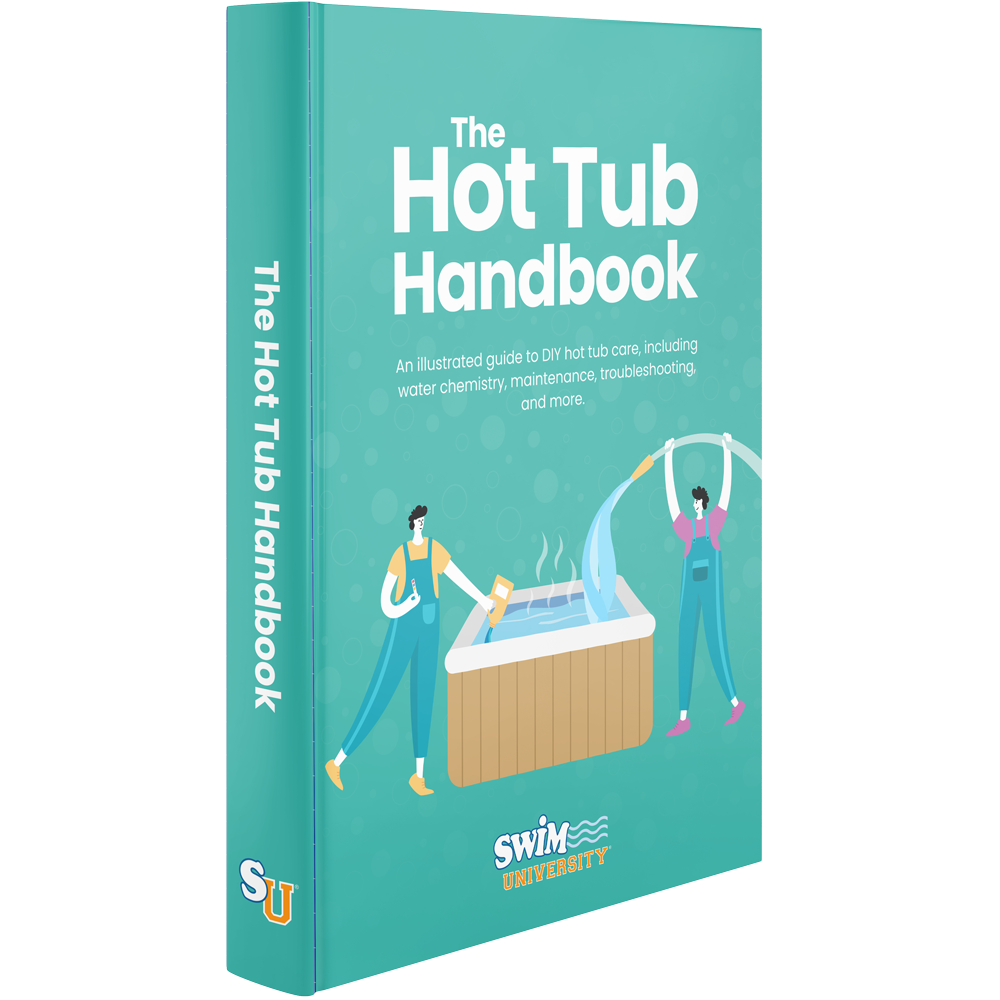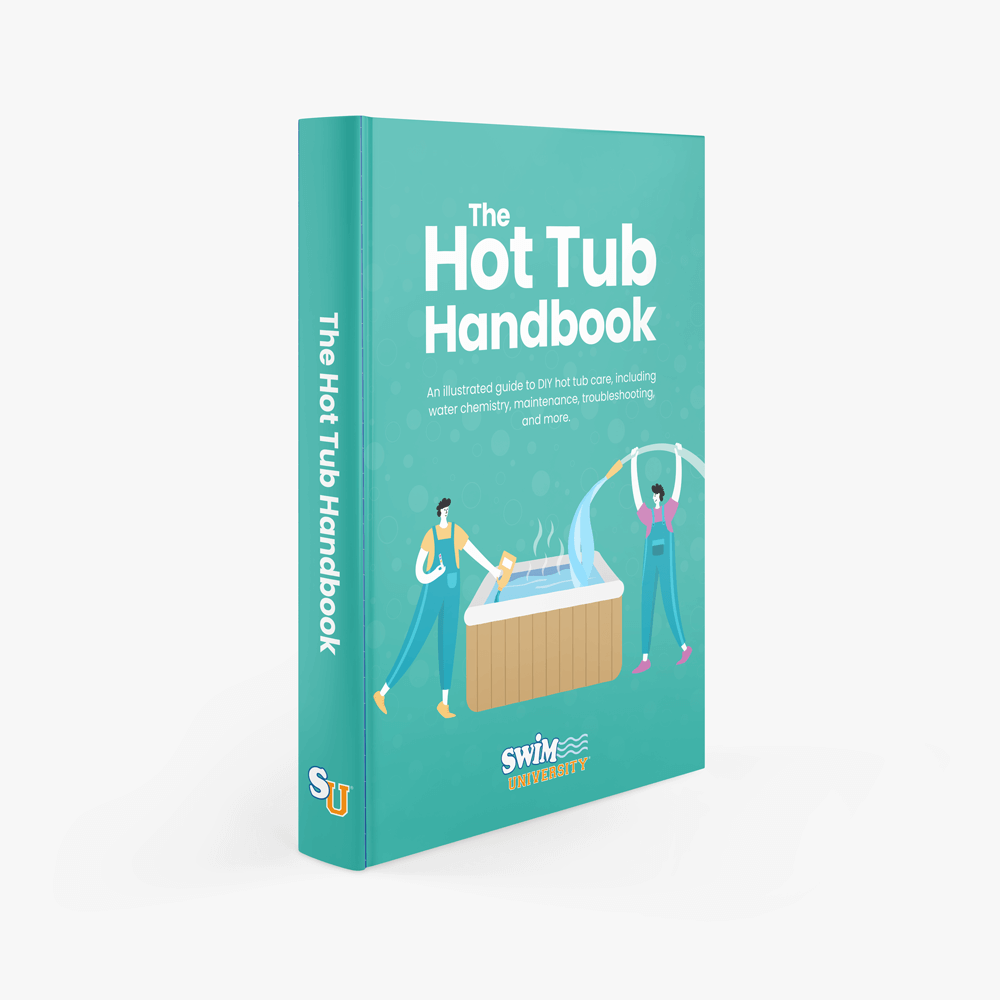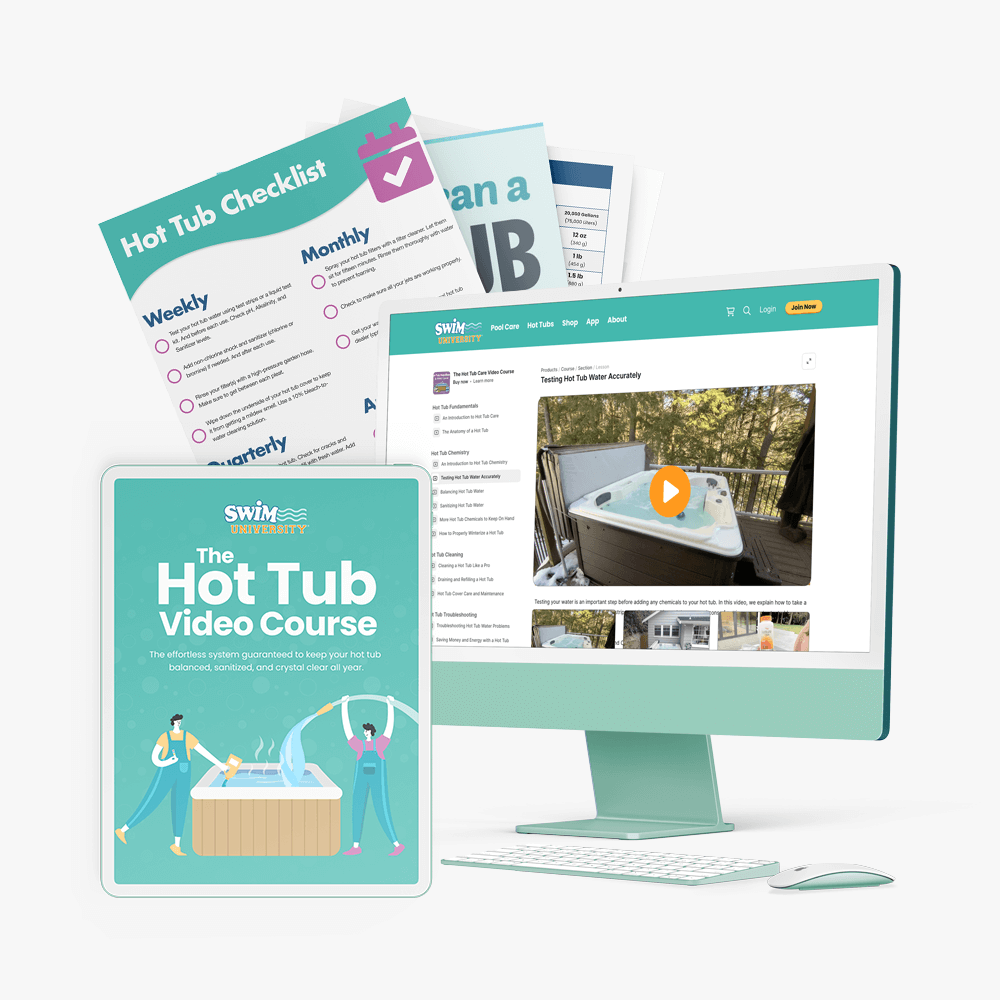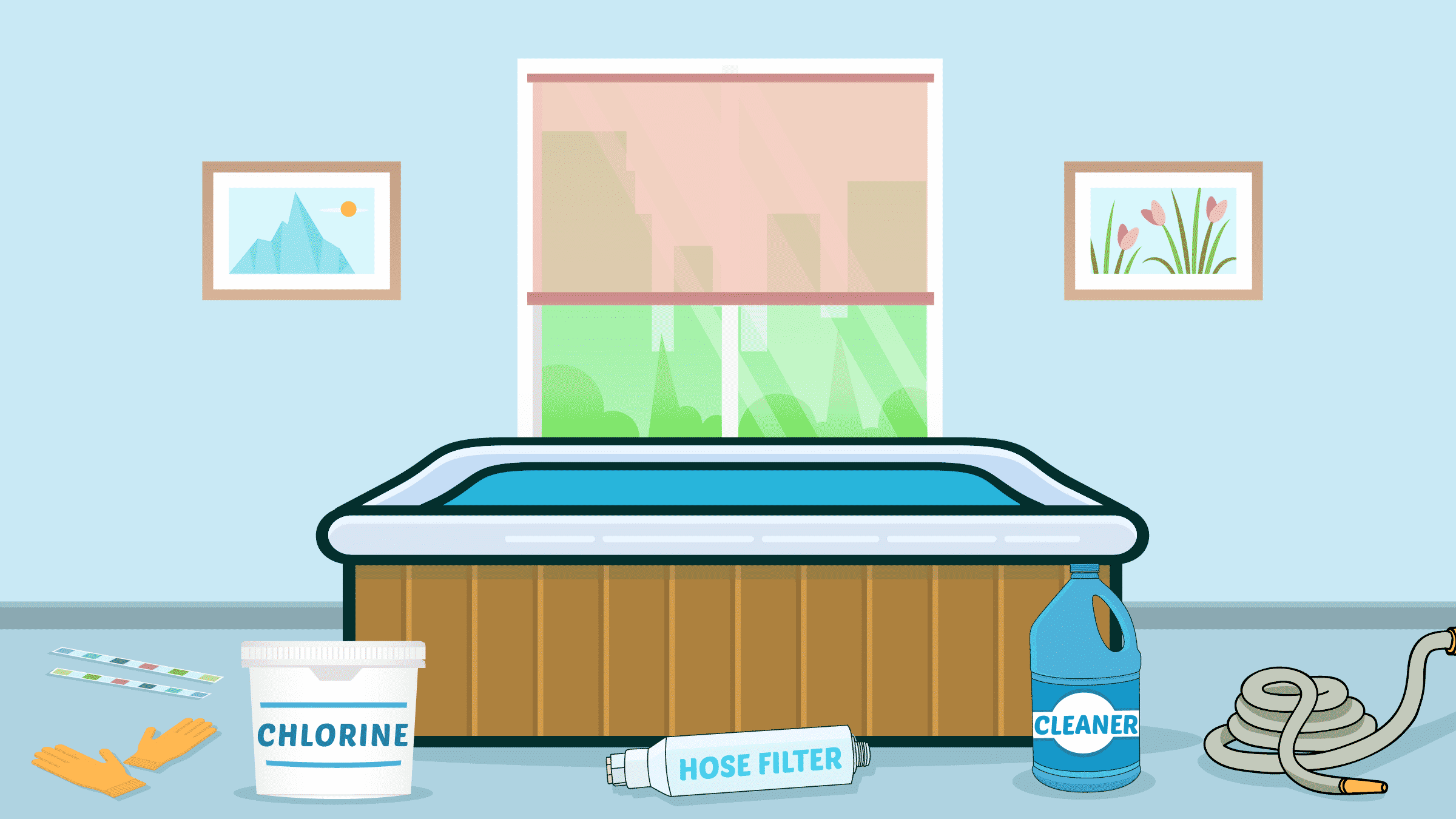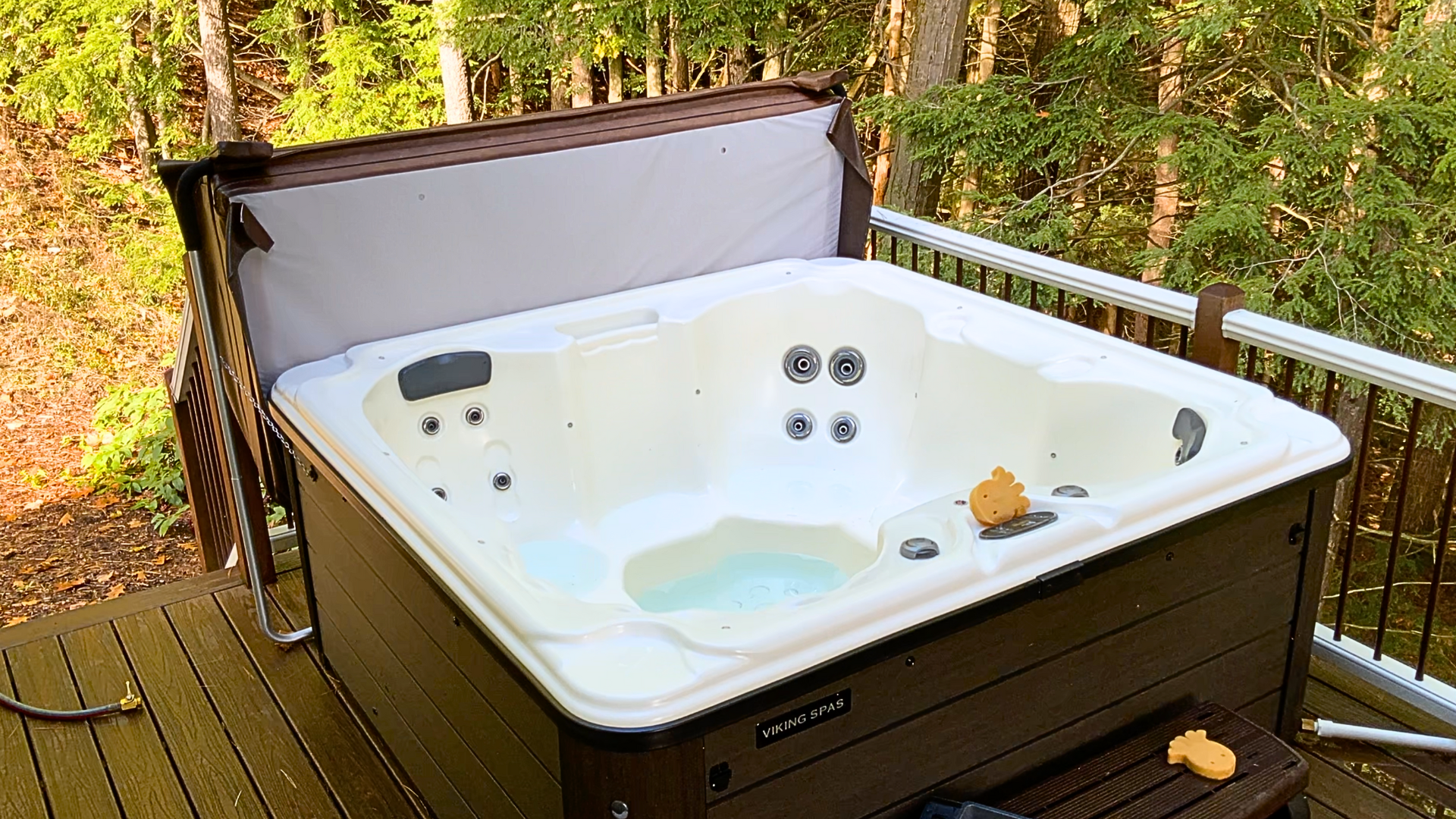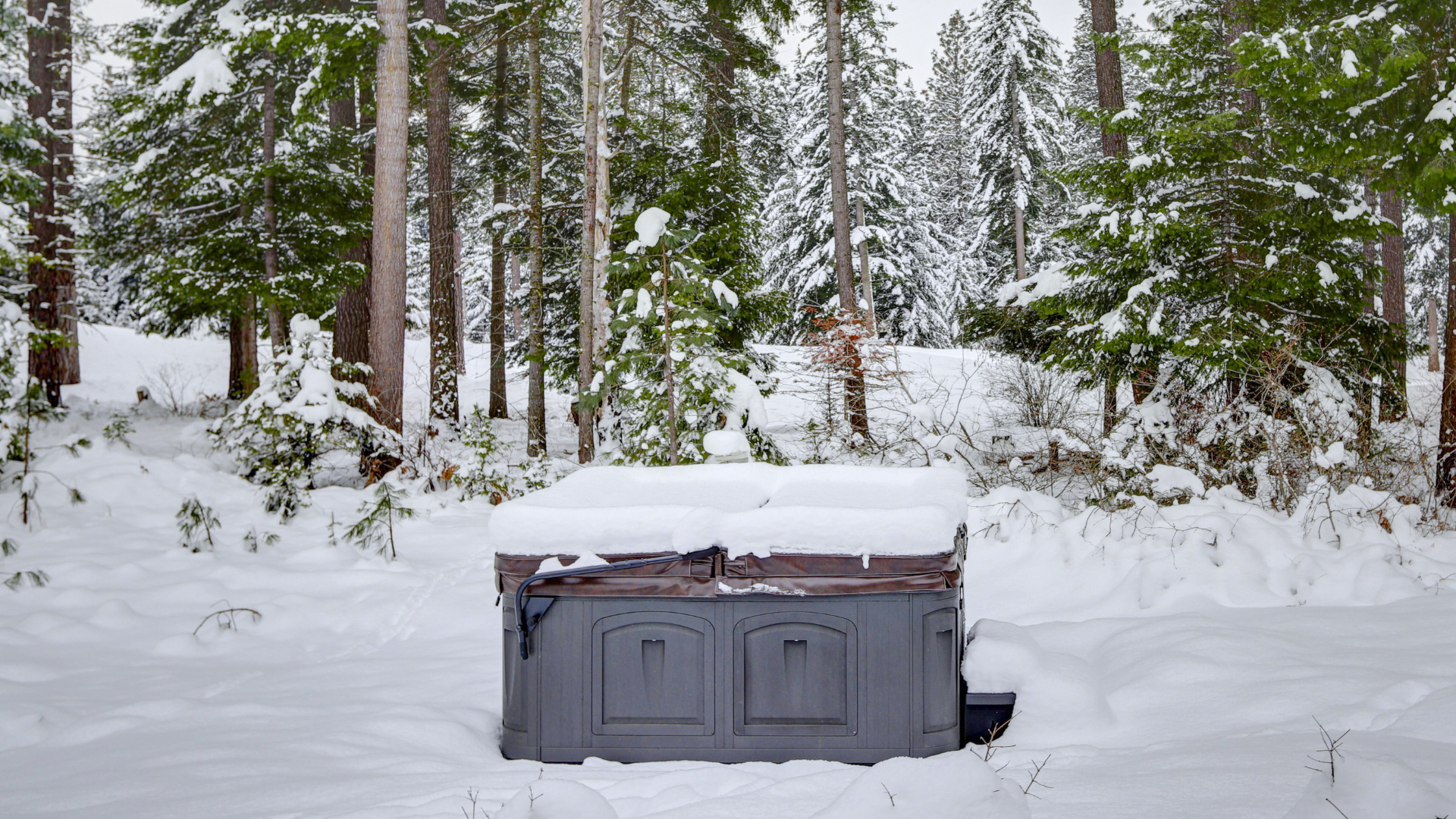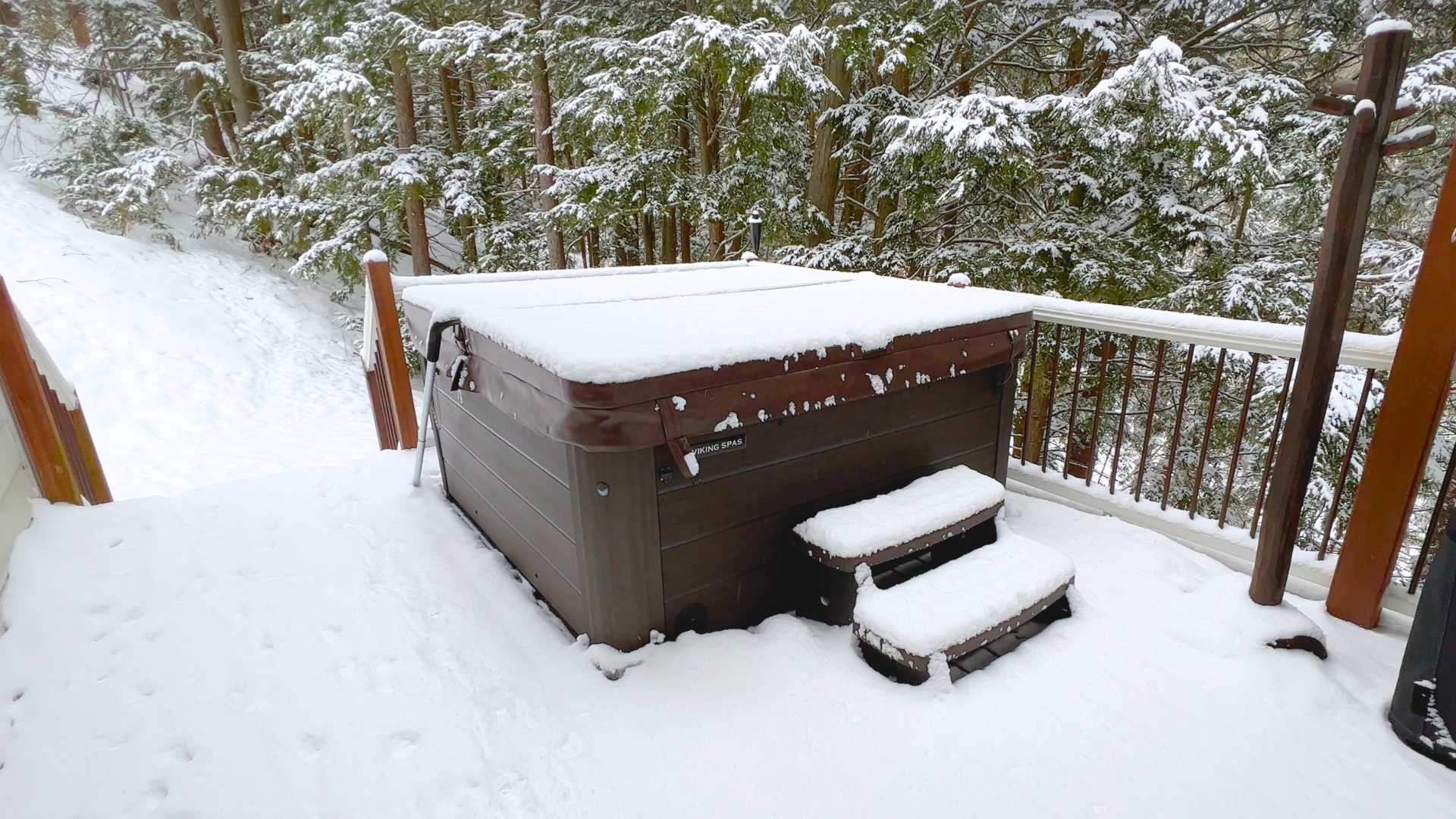How to Keep Your Hot Tub from Freezing
If your hot tub shuts off during freezing temperatures, your plumbing, pump, heater, and jets are at risk of freezing and cracking. Frozen hot tub pipes can cost thousands in repairs, and most warranties won’t cover freeze damage.
Whether you’re keeping your hot tub running all winter or closing it down, preventing freeze damage is simple if you take the time to prepare your hot tub properly.
- If your hot tub is full of water, keep your spa running with heated, circulating water using freeze protection mode.
- If your hot tub is empty, drain it, winterize it, and close it up for the winter.
Both methods prevent freeze damage, but each requires specific steps to protect your equipment from freezing temperatures.
At What Temperature Will Hot Tub Pipes Freeze?
Hot tub pipes are at risk when your water temperature drops to 32°F (0°C) or below. At this temperature, stagnant water in your plumbing will freeze, splitting the pipes and damaging your pump and heater. This is why it’s crucial to continuously circulate heated water through your spa when the outside temperature is below freezing.
Learn how to keep your hot tub clear while saving money so you can enjoy more soaking time without big costs. The Hot Tub Handbook covers every type of hot tub on earth.
How to Protect Your Hot Tub from Freezing If It’s Full of Water
1. Use Your Hot Tub’s Freeze Protection Sensor
Most modern hot tubs include a built-in freeze protection sensor that monitors the outside air temperature and communicates with the pump. When temperatures approach freezing, the pump automatically turns on to circulate the water and prevent freezing. Even with freeze protection enabled, check your water temperature regularly to confirm it’s working correctly.
2. Keep Your Water Circulating
If you don’t have a freeze protection setting, run the pump on low speed 24 hours a day or set it to cycle on for 15 to 20 minutes every hour to keep warm water constantly running through the pipes. Moving water is much less likely to freeze than still water. Even with surface water appearing frozen, the water in your pipes won’t freeze if the pumps are running.
3. Keep Your Water Warm
Turning your hot tub on and off not only increases the risk of freezing in winter, but it also takes more energy to heat the water. If you normally cool down and reheat your water between uses, switch to maintaining a constant warm temperature during cold months.
If you use your hot tub daily, set your temperature between 98°F and 102°F (37°C and 39°C). For use once or twice a week, keep the water heated to at least 80°F (27°C).
4. Secure Your Cover Properly
A well-fitting, secured spa cover is your first line of defense against heat loss. Check that your cover fits snugly and is securely fastened with straps or locks. If you lose power, a properly fitting cover can help a spa retain heat, even when the heater isn’t running.
Check your cover for signs of wear, water damage, or a bad fit. A sagging or loose cover allows heat to escape rapidly, forcing your heater to work harder and increasing your risk of freeze damage.
Always remove any snow or ice accumulation from your hot tub cover with a soft-bristled brush or broom. Additional weight can damage the cover and cause it to sag. Placing a tarp over your cover can help protect the cover itself and make snow and ice removal easier.
This hot tub cover is crafted from water-resistant polyester with reinforced seams, designed to remain secure even in high winds, thanks to its auto-locking drawcord and elastic hem.
5. Add a Floating Thermal Blanket
A floating thermal spa blanket provides an extra layer of insulation under your main cover. This blanket sits directly on top of the water, helping retain heat.
The thermal blanket also decreases condensation buildup on the underside of your cover. This helps fight mildew and prevents your cover from becoming waterlogged and damaged.
Use both a thermal blanket and a properly secured cover together for maximum freeze protection. The combination significantly reduces heat loss in freezing weather.
6. Monitor Your Water Level
If your water level drops below the skimmer intake, it may cause the pump and heater to turn off, leaving your spa vulnerable to freezing.
Check your spa’s water level regularly, and add water as needed to keep the level at least above the skimmer. This ensures your pump can continue circulating warm water through the plumbing lines.
7. Complete a Deep Clean Before Temperatures Drop
Plan to purge your plumbing, drain, clean, and refill your hot tub before freezing temperatures set in. If you drain your spa during cold weather, you risk the water freezing before you have time to refill and reheat it.
The ideal outside temperature for draining and refilling is when it’s consistently above 40°F (4°C). This provides a sufficient buffer to prevent any freezing risk during the process, which can take several hours from start to finish.
If it’s already freezing outside and you need to deep clean your hot tub, only partially drain the water and skip the plumbing purge.
How to Protect Your Hot Tub from Freezing If It’s Drained
If you won’t be maintaining your hot tub through winter or will be away from your spa for more than a month, you need to winterize it properly. Simply turning off the power and leaving your spa full of water will leave your hot tub susceptible to freeze damage.
Winterizing involves purging the plumbing with a line flush cleaner, completely draining the tub, vacuuming out all water from the lines and equipment, and adding antifreeze to the jet fittings and filter well.
For complete, step-by-step instructions, check out our How to Winterize a Hot Tub guide.
Can You Add Antifreeze to a Hot Tub to Prevent It From Freezing?
The best way to use antifreeze is after you’ve completely drained all the water from your plumbing and equipment during the winterization process. Adding pool-grade antifreeze to empty plumbing lines helps prevent any residual water from freezing. Do not add antifreeze to a hot tub that’s full of water. You would need to add about 25% to 50% of your tub’s volume to create a strong enough concentration.
It is safe for use in all potable and seasonal water lines. It protects systems down to -100° F, extreme cold weather, with a No Burst Guarantee.
How to Keep Your Hot Tub from Freezing During a Power Outage
Power outages during freezing weather are one of the biggest threats to your hot tub. If you experience frequent and lengthy power outages in winter, consider winterizing your spa.
For occasional power outages, your hot tub should stay warm enough during that time. A well-insulated spa with a quality cover can maintain temperature for several days without power.
Keep the cover on and add a tarp or blanket on top of your spa for extra insulation and protection from the elements.
What to Do If Your Hot Tub Freezes
If you discover that your hot tub has frozen, don’t attempt to use it until it has thawed completely. Turn off the breaker to prevent the system from trying to circulate frozen water. Allow the ice to melt naturally, then turn the power back on and check for cracked pipes, leaking equipment, or unusual sounds.
If you notice any issues, you may try to fix the hot tub leak yourself or contact a spa repair professional. Most hot tub repairs related to freeze damage aren’t covered under warranty.
Is a Hot Tub Ruined If It Freezes?
A hot tub that freezes isn’t necessarily ruined, but the damage can be extensive and expensive to repair. Frozen water expands and can crack pipes, damage pump seals, split heater housings, and break jet fittings.
The extent of the damage depends on how long the spa remained frozen and whether water froze throughout the plumbing system. A fully winterized spa with all water removed can withstand freezing temperatures without damage.If freeze damage occurs, you’ll need to replace cracked pipes, damaged pumps, or broken heaters. Most warranties don’t cover freeze damage, so prevention is far less expensive than repairs.
Key Takeaways
- Use freeze protection and keep water circulating: Enable your hot tub’s freeze protection mode to automatically circulate water when temperatures approach freezing, or manually run your pump on low speed 24/7 in winter.
- Keep water warm: Maintain a constant warm temperature between 80°F and 102°F (27°C and 39°C) rather than turning your heater on and off between uses.
- Keep your hot tub insulated: Use a well-fitting cover secured with straps, add a floating thermal blanket for extra insulation, and keep your cover clear of snow and ice.
- Check your water level: Regularly top off your water level to prevent the pump and heater from shutting off.
- Deep clean before winter: Complete any deep cleaning when the outside temperature is still consistently above 40°F (4°C).
- Winterize your spa if you won’t be using it: Properly winterize your spa by draining all water from the tub, plumbing, and equipment if you won’t be able to maintain it over the winter.
- Keep the cover on if you lose power: A well-insulated spa will stay warm for several days without power.
- If your hot tub freezes, turn off the breaker: Allow the ice to thaw naturally, then check for cracked pipes, leaking equipment, or unusual sounds before attempting repairs.
- When in doubt, winterize: Prevention costs far less than replacing cracked pipes, damaged pumps, or broken heaters since most warranties don’t cover freeze damage.
3 Ways We Can Help With Your Hot Tub
- Hot Tub Cheat Sheets (Free): Easy-to-use guides to help you keep your hot tub water balanced and sanitized.
- The Hot Tub Handbook: An illustrated guide to DIY hot tub care, including water chemistry, maintenance, troubleshooting, and more.
- The Hot Tub Care Course. You’ll get step-by-step videos and a step-by-step downloadable guide with everything you need to know about hot tub maintenance.

